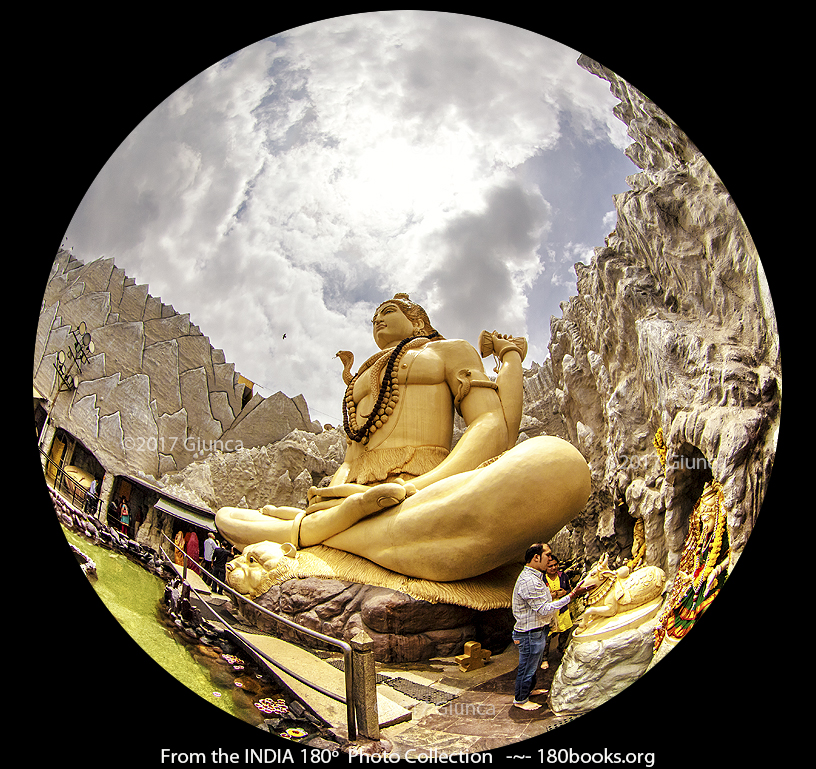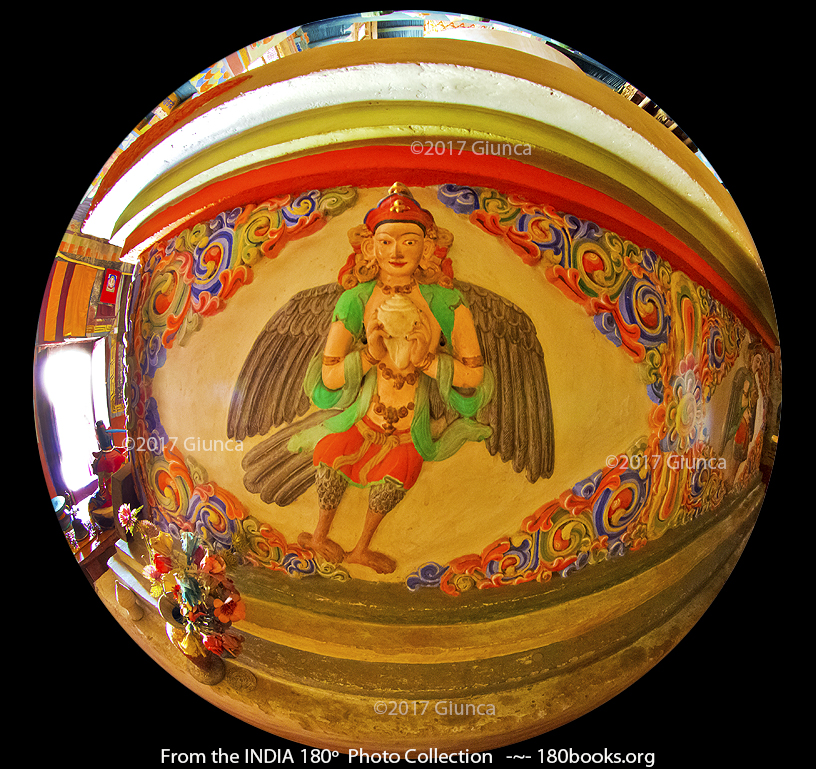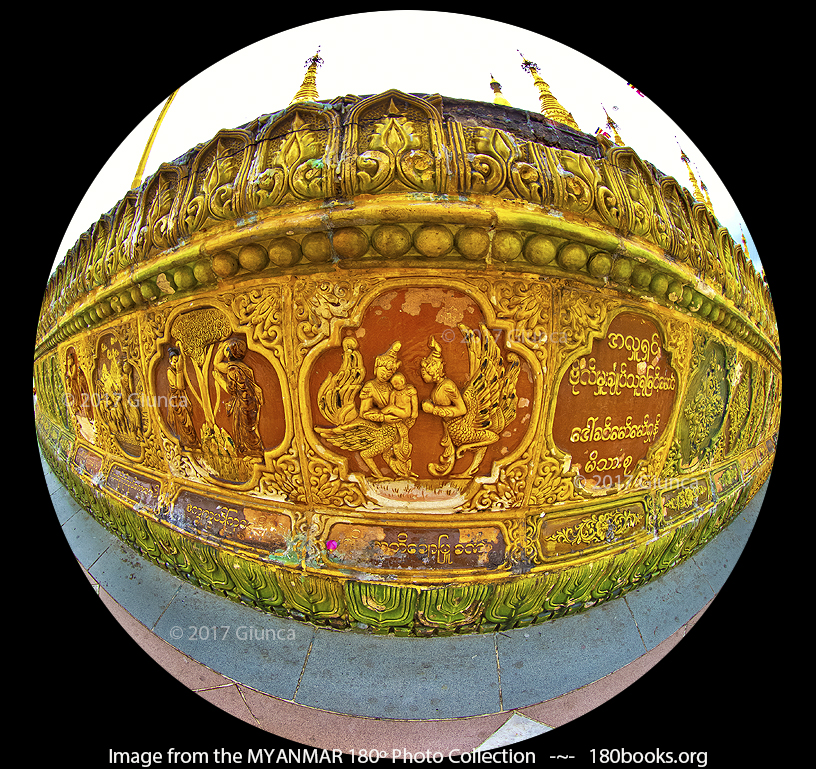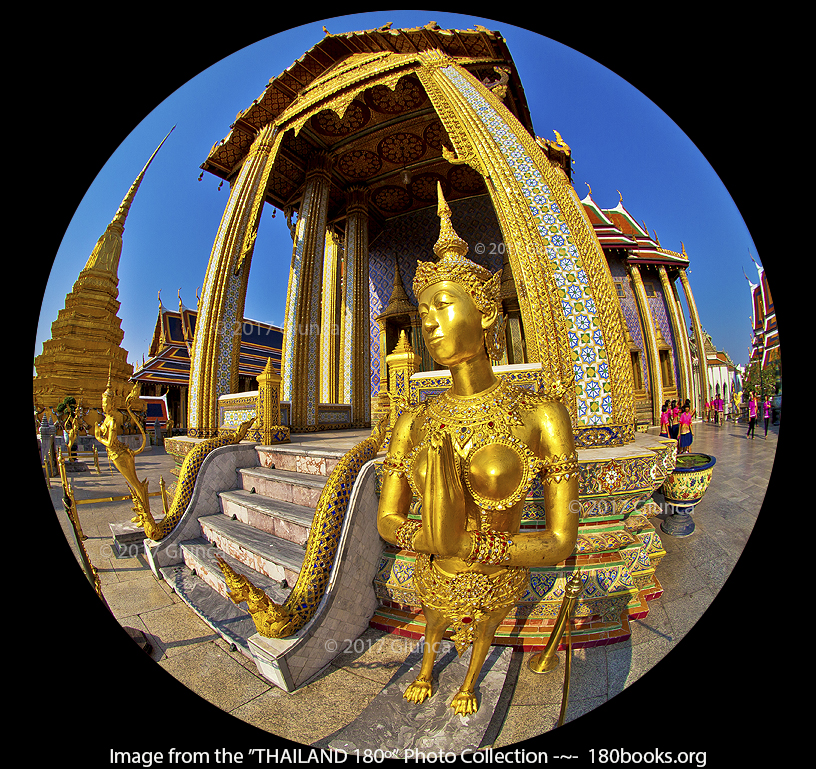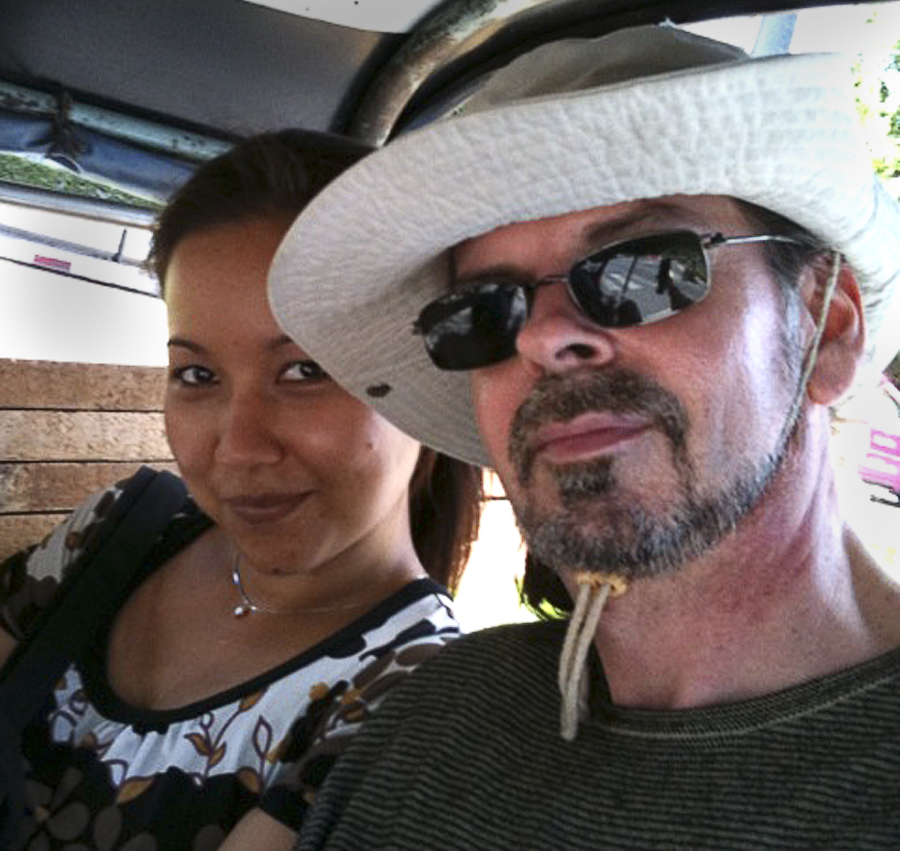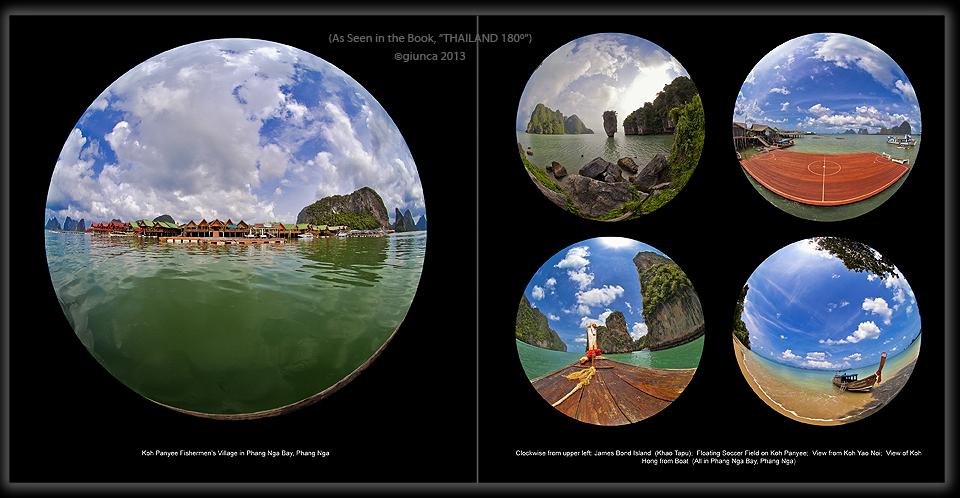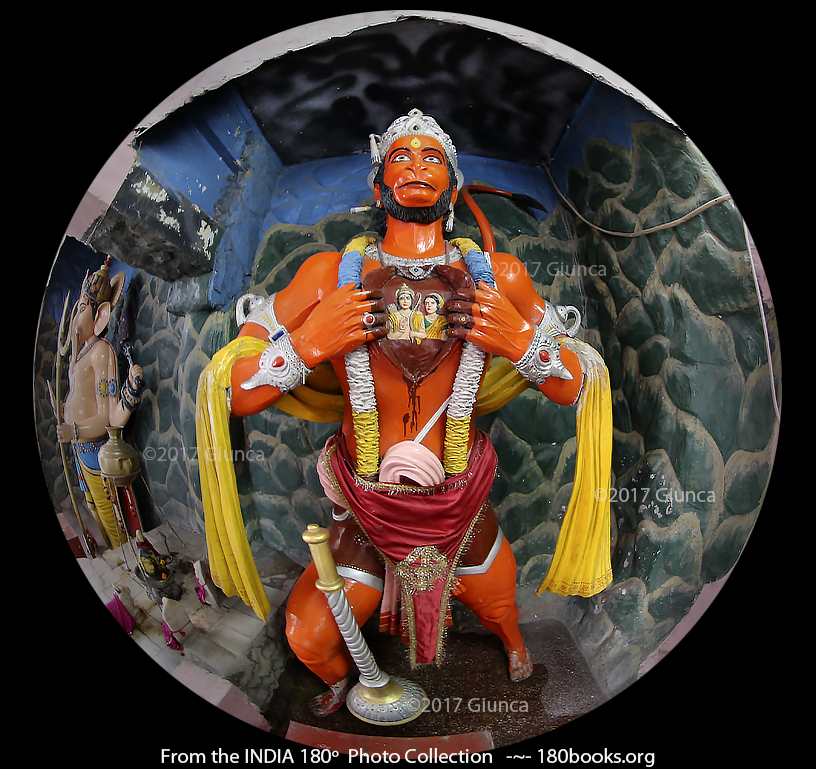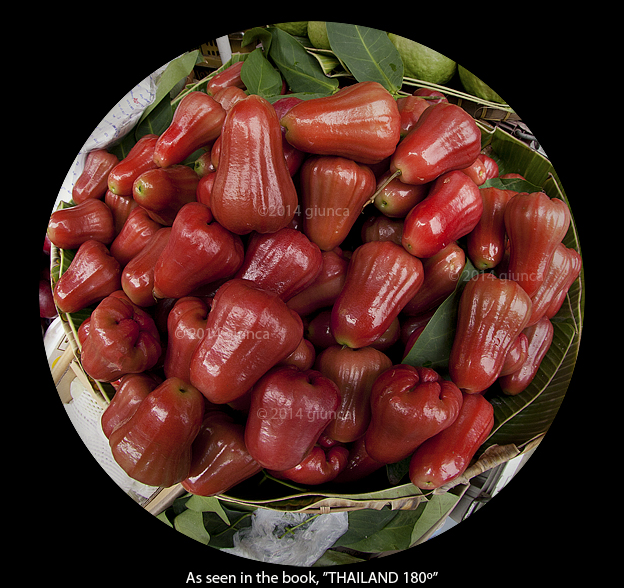Look Over There! It’s a Human. It’s a Bird. It’s a Horse. :: กินนร-กินนรี = คนอะไร?
No, It’s a Kinnara!
A little confusing, isn’t it? … I love studying about mythical creatures, especially from the Himmavant forest which is located high in the Himalayas. Art has a way of conveying ideas that words can’t, especially when we’re talking about Buddhist and Hindu cosmology. You may recall the Hussadeeling sculpture we talked about in the last blog. You know, the one that was cremated and took the soul of a famous monk to the edge of the astral plane? Well, today we’ll explore the Bird/Horse/Human known as the Kinnara. Pack your bags as we track this beautiful creature through Thailand, India, Myanmar, and beyond, WAY beyond!
อ่านชื่อเรื่องของบล็อกนี้แล้ว “งง” ล่ะสิคะ… ต่อจากบล็อกที่แล้วเกี่ยวกับ “นกหัสดีลิงค์ในงานศพพระสงฆ์ล้านนา” ที่เชื่อว่านกหัสดีลิงค์เป็นหนึ่งในสัตว์หิมพานต์ที่จะนำพาดวงจิตวิญญาณข้ามป่า ข้ามเขา และมหานทีสีทันดรไปจนชายแดนติดเขตแดนสวรรค์ … แต่ทางไปแดนสวรรค์นั้นจะต้องผ่านป่าหิมพานต์ก่อน ก็เลยอยากจะพาส่องสัตว์ลัดเลาะป่าหิมพานต์กันว่ามีอะไรที่เราพอรู้จักมักคุ้นกันบ้าง
Mount Meru, Himalayas & Himmavanta – เขาพระสุเมรุ หิมาลัย ป่าหิมพานต์
The exact location of Mount Meru is unknown; some believe that it is in the middle of the Earth, and can’t be seen. Of course, it’s between the North and the South Pole! –in fact, there are several mountains called Mt. Meru all around the globe. For our purpose, we’ll study the mountain mentioned in Hindu texts. According to the ancient texts, this mountain is surrounded by many layers of other high mountains, in the Mount Everest range. One of these is Mount Kailash that is described as being situated to the south of Mtn Meru. We found it in the area of the Himalayan range on the Google map but sadly no Mount Meru. Mount Kailash is in Tibet, now under China’s control. This mountain is where Shiva, the Hindus’ supreme God, sits in a state of perpetual meditation at the peak and it is also considered a sacred place for Buddhism, Jainism, and Bön as well. There is a belief that the stairway to heaven is on Mount Kailash, but oddly enough, Led Zeppelin failed to mention it in their famous song. Nearby the Kailash mountains are the Rakshastal and Mansarovar Lakes which are surrounded by forests that are reportedly inhabited by strange and fantastic creatures of all kinds. Sounds like the Himmavanta forest to me!
ทำความรู้จัก “เขาพระสุเมรุ” กันสักนิดนึงก่อน ในภาษาอังกฤษเรียกว่า Mount Meru เป็นภูเขาศูนย์กลางจักรวาล บนยอดเขาพระสุเมรุ เป็นสวรรค์ชั้นดาวดึงสุ์ที่ประทับของพระอินทร์และเหล่าทวยเทพบริวาร รอบเขาพระสุเมรุมีมหานทีสีทันดรล้อม และรอบทะเลสีทันดรนั้นก็ยังล้อมด้วยทิวเขาสัตตบริภัณฑคีรี หรือ ภูเขา ๗ ทิว อีกชั้นหนึ่ง ซึ่งเป็นที่อาศัยของเทวดาจาตุมหาราชิกและเหล่าบริวาร, คนธรรมพ์, ยักษ์, นาค และผีเสื้อกุมภัณฑ์ ในคัมภีร์ฮินดูกล่าวถึงเขาพระสุเมรุว่ามี “เขาไกรลาส” อันเป็นที่ประทับของพระศิวะอยู่ทางทิศใต้ ตั้งอยู่ในเทือกเขาหิมาลัยอันกว้างใหญ่ไพศาลและปกคลุมด้วยหิมะขาวพราวระยิบระยับและมีความหลากหลายทางชีวภาพสูง ทั้งพืชพันธุ์กว่า ๕,๐๐๐ ชนิด แมลงกว่า ๒,๐๐๐ ชนิด นกกว่าอีกกว่า ๕๐๐ ชนิด และสัตว์เลี้ยงลูกด้วยนมอีกเกือบ ๒๐๐ ชนิด (ข้อมูลเปลี่ยนแปลงตามกาลปัจจุบัน) เบื้องล่างเชิงเขาไกรลาส มีสระอโนดาต หรือปัจจุบันคือ ทะเลสาบมันสโรวาร์ (Lake Mansarowar) ที่เชื่อว่าเป็นมหานทีสีทันดรอันศักดิ์สิทธิ์มากสำหรับชาวฮินดูและชาวธิเบต หากได้ยาตราหรือธุดงค์มาถึงพร้อมทักษิณาวัตรและสัมผัสน้ำในทะเลสาบแห่งนี้แล้วจะได้ไปสวรรค์ใกล้ที่สถิตย์ของพระศิวะ ในวรรณคดีไทยกล่าวถึงป่าหิมพานต์ว่าตั้งอยู่ตรงบริเวณเชิงเขาไกรลาสนี้เอง
Time for Some Serious Bird, er, Kinnara Watching — – กินนร และ กินนรี
The word “Kinnara” in the Sanskrit language contains a question mark, किन्नर? to ask, is this a human? Kinnaras live on a level of “heaven” in the aforementioned forest singing and doing whatever Kinnaras do when they aren’t on duty. They are usually depicted as semidivine beings with a trunk of a man and a head of a horse.
Kinnaras were mysteriously linked with horses and the Great (and very long) Indian epic, the Mahabharata mentions Kinnaras, not as horse-headed beings but as beings who are half-man and half-horse, dwelling in the Himalayas. In Buddhist mythology as illustrated in some Jatakas, Kinnaras are a demi-god and are skilled in singing and playing music.
สัตว์หิมพานต์ที่เรานึงถึงเป็นลำดับแรกเลย คือ กินนร และกินนรี ซึ่งตามพจนานุกรมฉบับราชบัณฑิตยสถาน ให้ความหมายของคำว่า “กินนร (อ่านว่า กิน-นอน) เป็นสัตว์หิมพานต์ชนิดหนึ่ง มีทั้งเพศผู้และเพศเมีย. ตามรูปศัพท์ คำว่า กินนร มาจากคำภาษาบาลีว่า กึ (อ่านว่า กิง) แปลว่า อะไร. กับคำว่า นร (อ่านว่า นะ–ระ) แปลว่า คน. กึนร (อ่านว่า กิง-นะ–ระ) หรือ กินนร (อ่านว่า กิน-นอน) จึงแปลว่า คนอะไร.” —– !!นี่แหละ คือที่มาของชื่อบล็อกนี้ค่ะ
ตามปกรณัมอินเดีย อธิบายว่า กินนร มีส่วนลำตัวและขาเป็นมนุษย์ ส่วนลำคอและศีรษะเป็นม้า ในขณะที่ “มหาภารตะ” หนึ่งในสองมหากาพย์ที่ยิ่งใหญ่ของอินเดีย และเป็นมหากาพย์ที่ยาวที่สุดในโลก ก็กล่าวถึง “กินนร” ในบทเริ่มต้นของมหากาพย์ (อาทิบรรพ) ประมาณว่าเป็นครึ่งมนุษย์-ครึ่งม้า มีถิ่นอาศัยอยู่ในเทือกเขาหิมาลัย ภาพด้านบน – ประติมากรรมสลักหินที่ Khajuraho เป็นภาพพระนารายณ์ หรือพระวิษณุ อวตารมาเป็นฮายากรีวะ (Hayagriva) สำหรับทางพุทธศาสนาก็มีกินนรและกินนรีปรากฏอยู่ในชาดกต่างๆ โดยจัดให้กินนร-กินนรีอยู่ในประเภทกึ่งสัตว์กึ่งเทพ และมีทักษะในการร้องรำทำเพลง
In all branches of Buddhism, Kinnara (male) and Kinnari (female) are described in Jatakas as a half-human and half-bird. Jatakas are, of course, stories about the Buddha in his previous lifetimes before he was reborn as on Earth as Siddhartha. Fascinating read, but I digress. The above photo from Ladakh, India shows a stucco of a Kinnara holding a conch shell at the base of a stupa in the Rizong monastery. This is a Tibetian Buddhist monastery somewhat isolated and not all that far from the Himalayas. At the time of our visit, I wondered why it was there, but now I understand.
พุทธศาสนาทั้งมหายาน, เถรวาท, วัชรยาน และแขนงอื่นๆ ต่างก็ปรากฏภาพของกินนร-กินนรีในรูปครึ่งมนุษย์-ครึ่งนก (ภาพด้านบน)-ปูนปั้นรูปกินนรถือสังข์ตรงฐานสถูปภายใน Rizong Monastery วัดทิเบตที่อยู่ในลาดักห์ ประเทศอินเดีย พุทธศาสนากล่าวถึงกินนร-กินนรีว่าอาศัยในป่าหิมพานต์เชิงเขาไกรลาส อันเป็นที่อยู่ของครุฑ, ยักษ์, นาค, คนธรรพ์, นักสิทธิ์วิทยาธร, และเหล่าสัตว์ที่มีลักษณะพิเศษแตกต่างไปจากสัตว์ในโลกมนุษย์
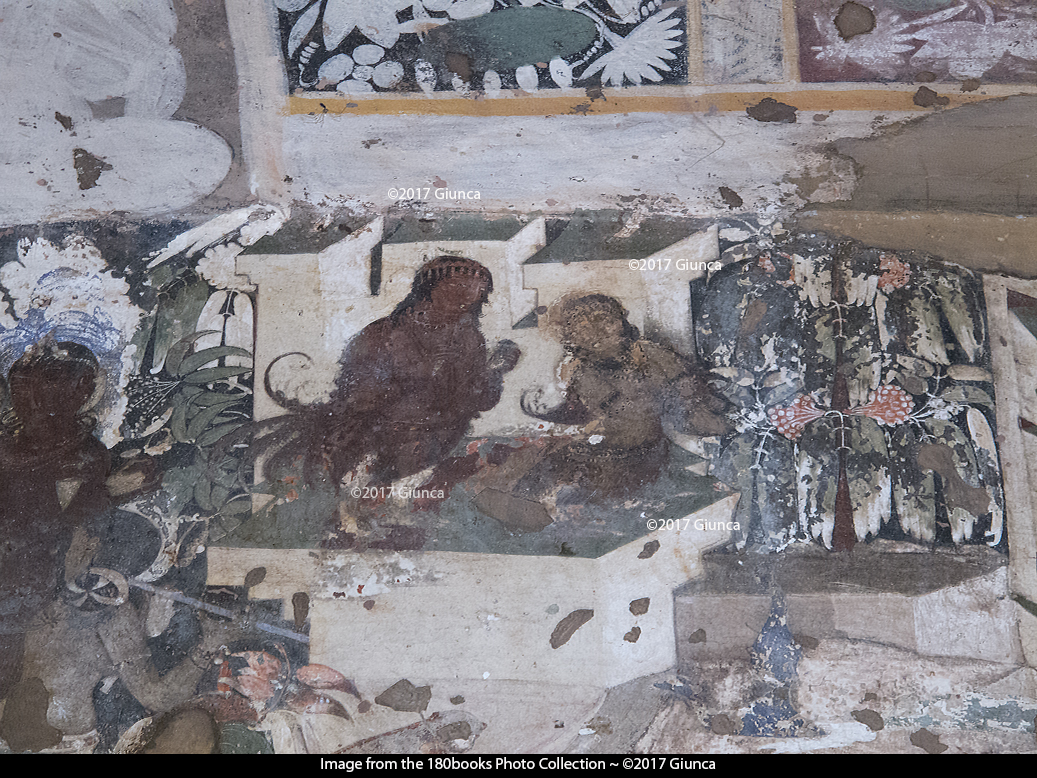
A Kinnara couple in a painting at the Ajanta Caves in Aurangabad district of the Maharashtra state of India
This Just In:
Last night we just happened to be watching a YouTube movie about the Ajanta caves, by a ufologist. After covering UFOs, zoophilia, and Hinduism, he mentioned that there were Kinnara paintings in one of the caves! I hadn’t seen any in my fisheye photos, but we hadn’t looked at Fon’s photos. Fon usually takes movies for our YouTube Channel, but the caves were dark and crowded, so she was capturing detail photos. Sure enough, she had a nice photo of a ceiling mural with a handsome Kinnara couple. This cave dates back thousands of years and the paintings are a bit deteriorated but I found the syncronisity amazing.
(((ขอแทรกตรงนี้นิดนึง))) จริงๆเขียนบล็อกเสร็จแล้ว แต่เมื่อคืนนั่งดูยูทูปเกี่ยวกับถ้ำ Ajanta ว่าอาจจะมี UFO หรือสิ่งเหนือธรรมชาติมีส่วนร่วมในการตัดเจาะถ้ำ ๒๙ ถ้ำกลางหุบเขาและยังมีที่กำลังขุดค้นและฟื้นฟูเพิ่มเติมอีก ฝีมือมนุษย์ธรรมดาที่ไหนจะทำได้ยิ่งใหญ่อลังการขนาดนี้ อีกทั้งภายในถ้ำแต่ละถ้ำยังเต็มไปด้วยงานแกะเสาหิน, หลังคาทรงโดมโค้ง มีสันคานคล้ายแนวกอธิค, มีหินแกะสลักเป็นพระพุทธรูปในปางต่างๆ, มีภาพเขียนชาดกแบบพุทธมหายานอย่างวิจิตรพิสดาร .. ดูไปดูมาจึงได้เห็นว่าหนึ่งในถ้ำนั้นมีภาพเขียน “กินนร-กินนรี” แบบครึ่งมนุษย์-ครึ่งนก .. รีบมาดูแคตตาล็อกภาพถ่ายของเราจนตาลาย ปกติฝนจะถ่ายคลิปวิดีโอมากกว่าภาพนิ่ง แต่ที่ถ้ำมีแสงน้อยบวกกับนักท่องเที่ยวเยอะมากแล้วบางถ้ำก็มีเสากั้นทางเดินเป็นระยะๆ ถ่ายคลิปลำบากจึงเปลี่ยนมาถ่ายภาพธรรมดาบ้าง !!เจอภาพนึงค่ะ ดีใจๆ ^^ … เป็นภาพจิตรกรรม “กินนร-กินนรี” คู่หนึ่ง ที่มีลักษณะครึ่งมนุษย์-ครึ่งนกตามแบบพุทธศาสนาในถ้ำอชันตา เมืองออรังกาบาด รัฐมหาราษฎร์ ประเทศอินเดีย ภาพจิตรกรรมนี้เก่ามากเพราะถ้ำที่มีภาพนี้มีอายุย้อนไปในพุทธศตวรรษที่ ๑-๒ เลยทีเดียว
Kinnara in Myanmar
In Myanmar, the Kinnara appear as one of the 108 symbols on the Buddha’s footprint. (If you’re not familiar with this piece of religious art, I’ll post a photo below, er, soon) The Burmese portray the creature as benevolent and half-human, half-bird. In their legends, pairs are extremely in love with one another and hopelessly devoted to each other. It is believed that kinnaras and kinnaris often protect humans in times of trouble or danger and love babysitting human babies when their parents aren’t at home. This part of the story seems to match with the photo above. We found this stucco of a Kinnara couple carrying a human baby on the side of the Shwedagon Pagoda’s base in Yangon. The parents of children in Myanmar all seemed to be very attentive, so I can’t imagine the origin of this tale.
กินนรและกินนรี ในประเทศเมียนมาร์ก็เป็นครึ่งมนุษย์-ครึ่งนกเช่นกัน อีกทั้งยังปรากฏเป็น ๑ ในมงคล ๑๐๘ บนพระพุทธบาท โดยยังคงคอนเซ็ปต์ความเป็นคู่รักตามต้นตำรับ และตามตำนานว่าจะคอยดูแลมนุษย์ในยามทุกข์เข็นหรือมีภัยอันตราย บ้างก็ว่าคอยช่วยดูแลปกป้องทารกน้อยเวลามนุษย์ไปหาอาหารฟืนไฟในป่า ซึ่งตรงประโยคสุดท้ายนี้ดูเหมือนว่าจะตรงกับภาพด้านบนที่ปรากฏตรงฐานด้านหนึ่งของพระมหาเจดีย์ชเวดากองว่ามีคู่กินนร-กินนรีอุ้มเด็กทารกอยู่ในอ้อมกอด
Flocks of Kinnara in Thailand
The kinnara-kinnari are perhaps most famous in Thailand. The beautiful sculptures at Wat Phrakaew (above) are one of the most photographed pieces of art on the temple grounds. There are even more examples here if you brave the sun and explore. The long panel of the Ramayana mural includes other beautiful gold sculptures of these creatures. With close examination, you will see BOTH kinds; half-man-half-horse AND half-human half-bird!! One major difference in this artwork is that the creatures have the head of a human and the body of a horse, whereas the Kinnaras in India and Cambodia sometimes have the head of a horse and the body of a human. It’s hard to tell which animal the different creatures identify with more, but I didn’t uncover any stories of them harming mankind, or any other creature.
We’ll take you on another photo safari in search of the mysterious creatures of the Himmapan forest in future blogs, but for now, let’s let them get some sleep!!
และในประเทศไทย กินนรและกินนรีมีชื่อเสียงไปทั่วโลก ด้วยความงามในศิลปะทั้งประติมากรรมและจิตรกรรม โดยเฉพาะกินนร-กินนรีที่วัดพระแก้วนั้นถ้าเราเดินให้ทั่ว จะสังเกตได้ว่ามีสัตว์หิมพานต์หลายชนิด ภาพด้านบนนี้ไม่ใช่กินนรีนะคะ แต่ไกด์ทัวร์หลายท่านชอบบอกนักท่องเที่ยวว่าเป็นกินนรี ทำเอาทั้งฝนและคุณเอ็ดรวมถึงนักท่องเที่ยวต่างชาติพากันเข้าใจผิดกัน
ป่าหิมพานต์มีสรรพสัตว์ที่งดงามแปลกประหลาดอีกมากมาย เราจะทยอยนำมาเขียนบล็อกให้อ่านและให้ชมกันเรื่อยๆ นะคะ โปรดติดตามตอนต่อไป ^^
!!..คลิ๊กแผนที่..!! ดูภาพสวยๆ อ่านบล็อกสถานที่ท่องเที่ยวจาก THAILAND 180º ได้นะคะ อัพเดทเพิ่มเติมตลอดค่ะ
If you enjoyed this story, subscribe using the “Subscribe” button below, or visit our facebook fan page to comment Here
We’d LOVE to hear from you!
ผู้ติดตามอ่านบล็อก สามารถติดตามอัพเดทโพสต์บล็อกได้โดยสมัครสมาชิกที่บล็อกนี้ หรือ กดไลค์เฟสบุ๊คเพจของเราที่นี่ Here
Blog : Thai by Apisatha Hussadee Giunca
Blog : English by George Edward Giunca
About the Authors
Photographer George Edward Giunca, and his Thai wife, Apisatha, have traveled around Thailand armed with a circular fisheye lens to create a photo essay on the rich cultural diversity, and abundant natural beauty of the Kingdom of Thailand. Fleeing from angry water buffaloes, slapping huge mosquitoes, watching exotic festivals and religious rituals, gorging on delicious spicy food, applying aloe vera cream to sunburned skin, wading through rice paddies, getting drenched to the bone by heavy monsoon rains, and gawking at breath-taking scenery; made it a journey of epic proportions! The result is the book, THAILAND 180º. Later, they traveled extensively through Myanmar, Malaysia, and India, gathering a massive collection of 180º photos. They currently live in Chiang Mai where they continue to blog and are now working on a CHIANG MAI 180º book.
Please Note: The photos in this article do not appear in this edition of THAILAND 180º
Here’s How to Order Your Copy of THAILAND 180º Collectors EditionToday!
In Thailand —>>>http://www.thailand180.com/thaiorder.html
The Rest of the world: We are offering our book on Amazon.com, below list price and I’ll pay for the shipping within the United States! http://amzn.to/1knDPRR
Not Familiar with Our Book???
This show details the origin of 180 Books, a series of art/travel books illustrated with a circular fisheye lens. By using infographics, pictures from our THAILAND 180º book, and never seen before images from our vault, we’ll demonstrate this unique lens and present our unique books.
Also, because there’s nothing to watch on TV, here’s a trailer about our book, “THAILAND 180”
Above is an interactive map of Thailand. If you click on a marker it reveals a photo from our THAILAND 180º book and a link to our blog article about the photo. Go Ahead~ Start Exploring ~Have Some Fun!


